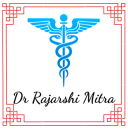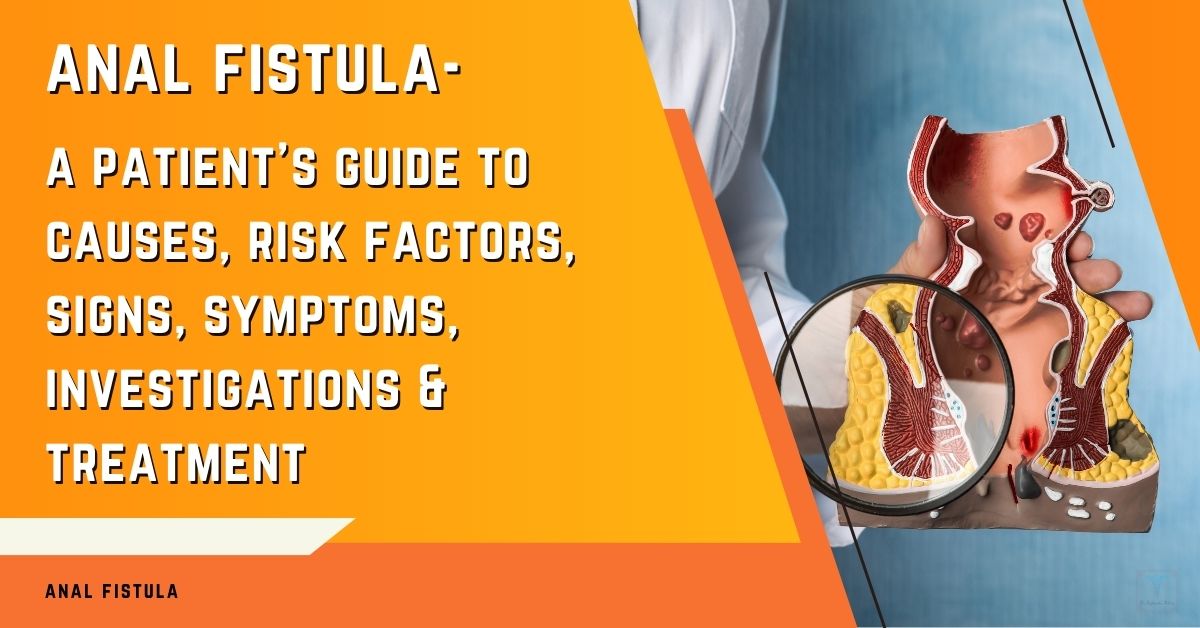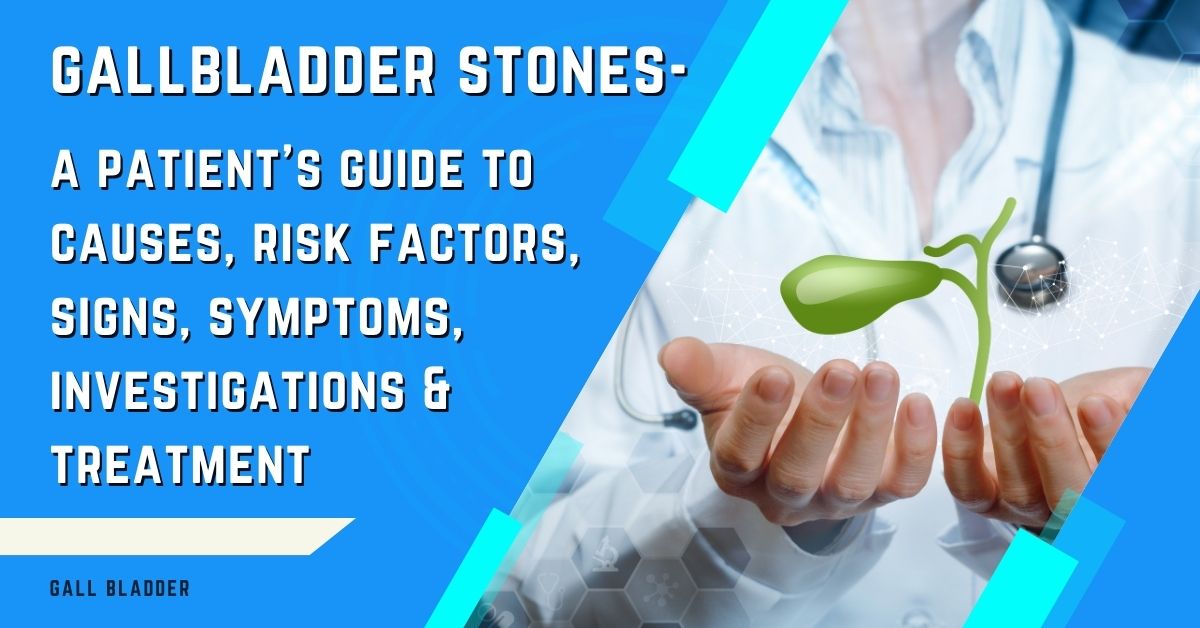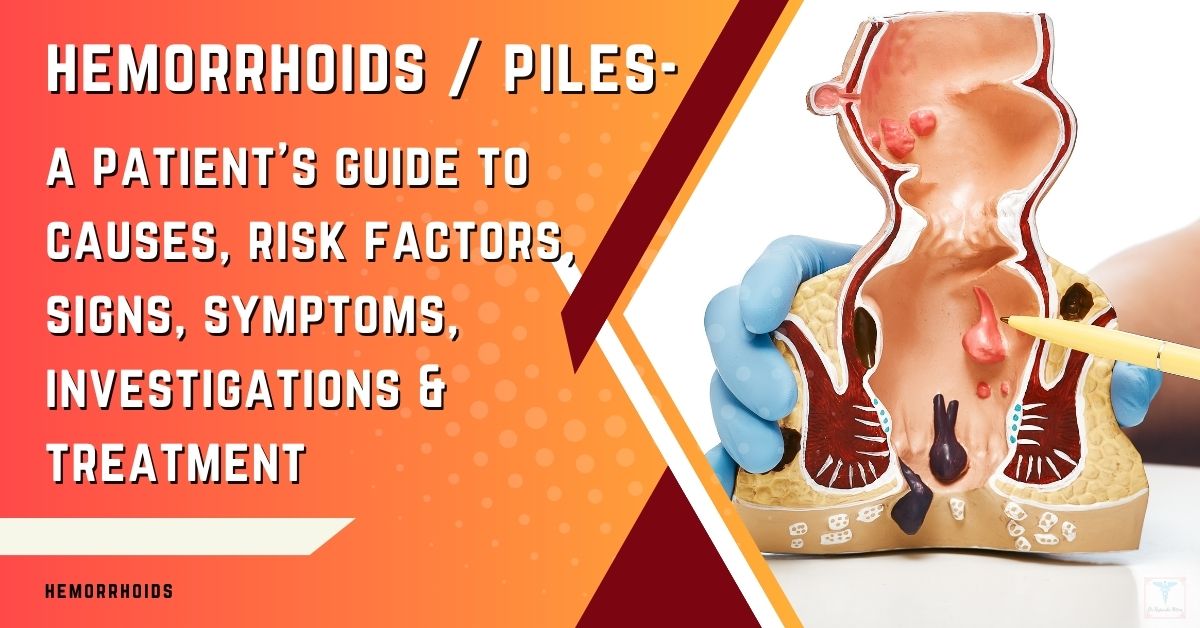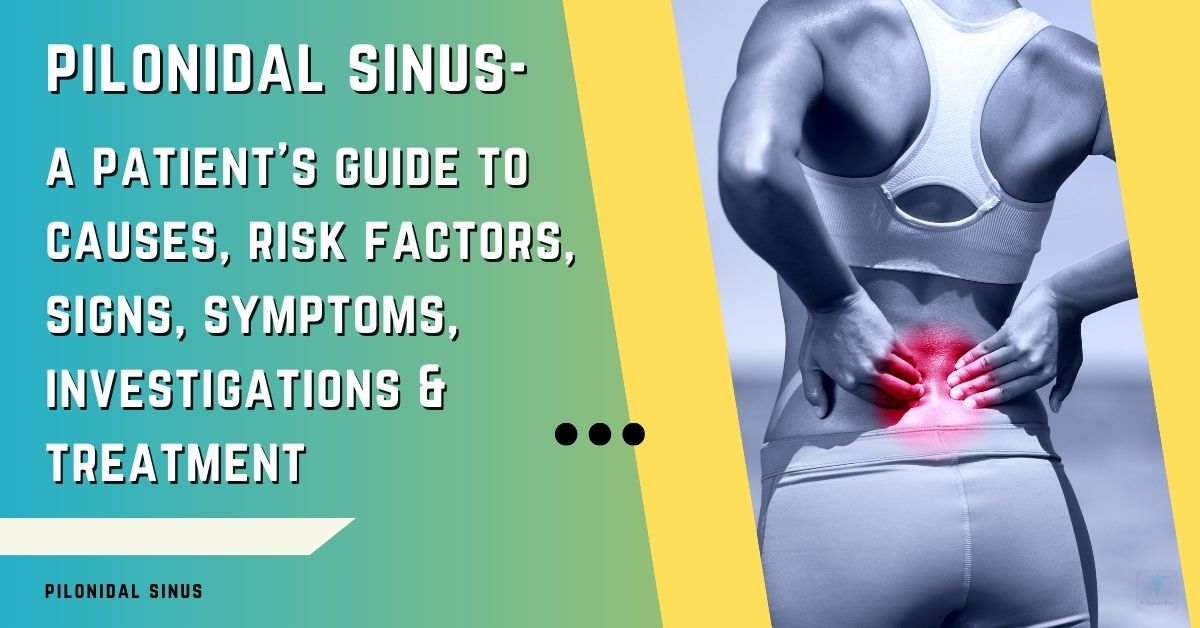Are you experiencing digestive discomfort and unsure if it’s related to your gallbladder or another issue? It’s common for gallbladder symptoms to mimic those of other digestive problems, making accurate diagnosis tricky.
In this comprehensive guide, Dr. Rajarshi Mitra, a highly rated laparoscopic surgeon practicing in Abu Dhabi, with over 20 years of experience, will help you distinguish gallbladder symptoms from other common digestive ailments. This information will empower you to better understand your symptoms and make informed decisions about your health.
Understanding the Gallbladder and Its Functions
What is the Gallbladder?
The Gallbladder’s role in digestion
The gallbladder is a small, pear-shaped organ situated beneath the liver in the upper right quadrant of your abdomen. It’s a vital part of your digestive system, primarily functioning as a storage reservoir for bile.
Bile, produced by the liver, is a fluid essential for the digestion and absorption of fats and fat-soluble vitamins (A, D, E, and K). After a meal, particularly one containing fats, the gallbladder contracts and releases stored bile into the small intestine through the common bile duct. This process helps emulsify fats, breaking them down into smaller droplets that can be more easily digested and absorbed.
Without the gallbladder’s role in storing and releasing bile, your body would have difficulty processing fats efficiently, potentially leading to digestive issues. Think of the gallbladder as the body’s “bile reserve,” ready to assist when you need it most.
How Gallbladder problems develop
Gallbladder problems typically arise when there is an issue with bile flow or the composition of bile itself. The most common cause is the formation of gallstones, which can obstruct the bile ducts and cause inflammation, pain, or infection.
The formation of gallstones is not completely understood, but it’s thought to be related to an imbalance in the components of bile, such as excessive cholesterol or bilirubin. Other factors, including obesity, rapid weight loss, certain medications, and a family history of gallstones, can increase the risk of developing them.
Inflammation of the gallbladder (cholecystitis) can occur due to gallstones or, less commonly, from other factors like tumors, infections, or reduced blood supply. In some cases, the gallbladder may not empty correctly, leading to a condition called biliary dyskinesia.
Understanding how these problems develop is essential for recognizing and addressing gallbladder issues effectively, and often involves a surgical approach. Early diagnosis of gallbladder problems can significantly improve outcomes, making it crucial to pay attention to common gallbladder symptoms in women, such as abdominal pain and nausea. Education about these symptoms enables individuals to seek timely medical attention, potentially avoiding surgery. In cases where surgery is necessary, understanding the underlying causes can further guide postoperative care and recovery strategies.
Common Gallbladder Conditions
Gallstones (Cholelithiasis)
Gallstones, also known as cholelithiasis, are hardened deposits of digestive fluid that can form in the gallbladder. They vary in size from tiny grains to large stones and can be composed mainly of cholesterol, bilirubin, or a combination of both.
While some gallstones may remain asymptomatic, others can cause significant problems, including severe pain in the upper right abdomen (biliary colic), nausea, vomiting, and potential complications like cholecystitis if they obstruct the bile ducts.
Gallstones are among the most common gallbladder disorders, and their presence often necessitates medical intervention, particularly if symptomatic. It’s important to know that while some stones may pass on their own, many will need to be managed by an experienced surgeon.
Cholecystitis (Inflammation of the gallbladder)
Cholecystitis refers to inflammation of the gallbladder and is most commonly caused by gallstones obstructing the cystic duct, which is the narrow tube through which bile exits the gallbladder. This blockage can cause a backup of bile, leading to gallbladder swelling, inflammation, and infection.
The inflammation of the gallbladder often causes severe and constant pain in the upper right abdomen. Other symptoms include fever, nausea, vomiting, and tenderness upon palpation. Acute cholecystitis often requires immediate medical attention, including hospitalization and potentially surgical removal of the gallbladder (cholecystectomy).
Chronic cholecystitis is a long-term inflammation of the gallbladder which is usually associated with repeated episodes of acute cholecystitis and may also require surgical intervention.
Biliary dyskinesia
Biliary dyskinesia is a condition in which the gallbladder’s ability to contract and release bile is impaired. This can lead to pain and discomfort in the upper right abdomen, which may mimic gallbladder pain from gallstones. Unlike gallstones, there are no physical blockages, but rather a malfunction in the gallbladder’s motility.
The diagnosis of biliary dyskinesia often involves medical tests like HIDA scan to assess the gallbladder function. Management may include medication, dietary changes, or, in some cases, surgical removal of the gallbladder if symptoms are severe and persistent.
The key to diagnosis is that there are no gallstones associated with this condition, or that surgery would resolve the symptoms despite the absence of gallstones.
Gallbladder Polyps
Gallbladder polyps are abnormal growths that protrude from the lining of the gallbladder. They are often discovered incidentally during imaging studies. Most gallbladder polyps are benign, but a small percentage can be precancerous or cancerous.
The size and characteristics of the polyps are important in determining the risk of malignancy. Small polyps that are less than 1 cm may be monitored, but larger polyps or those that grow over time may require surgical removal. While most polyps are asymptomatic, some may cause abdominal pain, similar to gallbladder problems from gallstones.
Gallbladder Cancer
Gallbladder cancer is a relatively rare but aggressive malignancy that develops in the gallbladder’s lining. It’s often diagnosed at a late stage because the symptoms may not be apparent early on, or can be confused with other more common gallbladder conditions.
Risk factors include gallstones, chronic inflammation of the gallbladder, and certain genetic conditions. Symptoms of gallbladder cancer may include abdominal pain, jaundice (yellowing of the skin and eyes), weight loss, and nausea.
Treatment options for gallbladder cancer are often limited and usually involve surgical removal of the gallbladder and surrounding tissue, as well as other procedures like chemotherapy and radiotherapy.
Common Digestive Issues That Mimic Gallbladder Problems

Acid Reflux and GERD (Gastroesophageal Reflux Disease)
Symptoms of acid reflux
Acid reflux, also known as heartburn, occurs when stomach acid flows backward into the esophagus, the tube connecting the mouth to the stomach. This backflow of stomach acid can irritate the lining of the esophagus, causing a burning sensation in the chest, often behind the breastbone. This sensation is often described as heartburn.
Other symptoms of acid reflux include a sour taste in the mouth, regurgitation of food, a feeling of a lump in the throat, and difficulty swallowing (dysphagia). Occasional acid reflux is common, but frequent or severe acid reflux may indicate GERD, a chronic condition.
You can learn more about acid reflux from the National Institute of Diabetes and Digestive and Kidney Diseases (NIDDK).
How GERD can be confused with gallbladder issues
The pain associated with GERD can sometimes be mistaken for gallbladder pain due to its location in the upper abdomen or chest. Some people may experience GERD symptoms in the upper abdomen, near the area of the gallbladder, causing confusion between the two conditions.
Additionally, both GERD and gallbladder problems can cause nausea and a feeling of fullness in the stomach. The nature of the pain can also sometimes be similar, with a burning or pressure-like sensation, which can make it difficult to distinguish between the two without a thorough medical evaluation.
Therefore, medical tests may be required to confirm whether the symptoms are from GERD or gallbladder disease.
Irritable Bowel Syndrome (IBS)
Symptoms of IBS
Irritable Bowel Syndrome (IBS) is a common gastrointestinal disorder characterized by a range of symptoms affecting the large intestine. These symptoms typically include abdominal pain or cramping, bloating, gas, and changes in bowel habits, such as diarrhea, constipation, or alternating periods of both. The severity of symptoms can vary greatly from person to person and may fluctuate over time.
While IBS is not associated with structural abnormalities in the digestive tract, it can significantly impact an individual’s quality of life. Stress, certain foods, and hormonal changes can often trigger IBS symptoms.
You can learn more about IBS from the Mayo Clinic.
Differentiating IBS from gallbladder pain
While IBS primarily affects the large intestine, its symptoms like abdominal pain and bloating can sometimes mimic gallbladder issues. The pain in IBS is usually more diffuse and less likely to be located in the upper right abdomen like typical gallbladder pain.
IBS pain also tends to be associated with changes in bowel habits, which is not common in gallbladder conditions. Gallbladder pain is often associated with nausea and vomiting, while these symptoms may or may not be present in IBS patients.
It’s also important to note that IBS pain is often triggered by food intake, and it may be relieved with defecation. In contrast, gallbladder pain does not follow this pattern.
Peptic Ulcers
Symptoms of peptic ulcers
Peptic ulcers are sores that develop in the lining of the stomach (gastric ulcers) or the first part of the small intestine (duodenal ulcers).
The most common symptom of a peptic ulcer is abdominal pain, which is often described as a burning or gnawing sensation. The pain is typically located in the upper abdomen but can sometimes be felt in other areas. Other symptoms include nausea, vomiting, loss of appetite, bloating, and weight loss.
In severe cases, peptic ulcers can cause complications such as bleeding, perforation, or obstruction, which require medical attention.
Overlap with gallbladder symptoms
The abdominal pain associated with peptic ulcers can sometimes overlap with the symptoms of gallbladder disease. The pain of a peptic ulcer may be felt in the upper abdomen, similar to the location of gallbladder pain. Additionally, both conditions can sometimes cause nausea and vomiting.
Peptic ulcer pain is typically related to meals, and is often relieved with taking antacids or food. On the other hand, gallbladder pain is often associated with fatty foods and does not get better with antacids.
However, without a medical evaluation, it can be difficult to differentiate between these two conditions and it is crucial to consult a physician for proper diagnosis and treatment.
You can find more information about Peptic Ulcers at the Cleveland Clinic.
Pancreatitis
Acute and chronic pancreatitis symptoms
Pancreatitis is inflammation of the pancreas, a gland located behind the stomach that plays a vital role in digestion.
Acute pancreatitis comes on suddenly and causes severe upper abdominal pain that may radiate to the back. Other symptoms include nausea, vomiting, fever, rapid pulse, and abdominal tenderness. Chronic pancreatitis develops gradually and causes recurrent abdominal pain, weight loss, diarrhea, and signs of malabsorption.
Both acute and chronic pancreatitis can be caused by gallstones, heavy alcohol consumption, certain medications, and other risk factors.
How pancreatitis might feel similar to gallbladder problems
The upper abdominal pain associated with pancreatitis, particularly acute pancreatitis, can sometimes mimic the pain associated with gallbladder issues. Both conditions can cause severe pain in the upper abdomen, nausea, and vomiting. Moreover, gallstones can be a contributing factor to both conditions.
Due to the similarity of the initial symptoms, medical evaluation is essential to properly diagnose and manage the condition, as treatment approaches differ substantially. The pain of pancreatitis tends to be more severe and persistent and often radiates to the back.
Gastritis
Acute and chronic gastritis symptoms
Gastritis is an inflammation of the lining of the stomach.
Acute gastritis occurs suddenly and can cause nausea, vomiting, and pain in the upper abdomen or epigastric region. Chronic gastritis can develop slowly over time. Its symptoms are often less severe than those of acute gastritis and include discomfort, fullness, loss of appetite, and bloating.
Both acute and chronic gastritis can be caused by bacterial infections (e.g. Helicobacter pylori) as well as by medications, alcohol, bile reflux and stress.
Differentiation from gallbladder symptoms
While gastritis and gallbladder issues can cause pain in the upper abdomen, they have distinct patterns.
Gastritis pain is usually in the epigastric region, which is the center of the upper abdomen. It often causes a burning or gnawing discomfort and is frequently related to food intake, particularly spicy or acidic meals. Gallbladder pain is typically more localized to the upper right quadrant of the abdomen and often comes with nausea and vomiting.
Furthermore, the nature of the pain differs, with gastritis often having a burning or gnawing quality, whereas gallbladder pain is frequently described as a sharp, crampy, or pressure-like discomfort.
You can find more information about gastritis from the John Hopkins Medicine.
Food Intolerances and Sensitivities
Common food triggers
Food intolerances and sensitivities occur when the body has difficulty digesting or processing certain foods. Common triggers include lactose (found in dairy products), gluten (found in wheat, barley, and rye), caffeine, and certain food additives or preservatives.
Symptoms typically appear within a few hours of consuming the problematic food and can vary widely. It is very important to differentiate food intolerance and food allergies. Food intolerances are not associated with the immune system and are not as dangerous as food allergies.
Digestive symptoms and overlap with gallbladder problems
Food intolerances can cause various digestive symptoms, such as abdominal pain, bloating, gas, diarrhea, and nausea, which may sometimes mimic symptoms of gallbladder problems.
However, symptoms of food intolerance are typically related to specific food intake and are less likely to be associated with severe pain. In contrast to gallbladder pain, which is more severe and localized to the upper right quadrant of the abdomen, the pain of food sensitivities can be more diffuse and may also be accompanied by other symptoms such as headache, fatigue and skin rashes. Unlike gallbladder issues, these are typically not associated with fever or jaundice.
Key Differences in Symptoms: Gallbladder vs. Other Digestive Issues

Location of Pain
Typical gallbladder pain location
Gallbladder pain is characteristically located in the upper right quadrant of the abdomen, just below the rib cage. This area corresponds to the anatomical position of the gallbladder, which is situated beneath the liver.
The pain may be localized to this area or it may radiate to the upper abdomen or back, specifically the right shoulder blade. This characteristic pain location is often a key indicator of potential gallbladder issues and is often caused by gallstones or inflammation in the gallbladder itself.
It’s important to note that not all pain in the upper right abdomen is due to gallbladder issues.
Pain location in other digestive issues
The pain associated with other digestive issues varies in location and can help distinguish them from gallbladder problems.
For instance, pain from acid reflux or GERD is often felt behind the breastbone or in the upper abdomen, without the specific location in the upper right quadrant as seen in gallbladder issues.
Pain from IBS is typically more diffuse and can occur anywhere in the abdomen, often associated with changes in bowel habits.
Peptic ulcer pain is usually felt in the upper central part of the abdomen, and pain from pancreatitis can radiate to the back and is typically more severe.
Food sensitivities can cause abdominal pain that is more generalized and less localized.
Understanding these differences in pain location can assist in narrowing down the potential cause of the discomfort.
Nature of Pain
Characteristics of gallbladder pain
Gallbladder pain is often described as a sharp, cramping, or pressure-like sensation. It’s frequently referred to as “biliary colic,” which refers to severe, sudden abdominal pain caused by gallstones.
The pain can be constant or intermittent and often increases in intensity over a short period. The pain is not colicky, as the name suggests, and usually lasts from 30 minutes to several hours. It is often triggered after consuming a fatty meal, as the gallbladder contracts to release bile. The pain may be accompanied by nausea and vomiting.
Pain patterns in other conditions
The pain patterns associated with other digestive conditions differ from gallbladder pain.
GERD pain is often described as a burning sensation or heartburn that is located behind the breastbone or in the upper abdomen.
IBS pain is often described as cramping or a dull ache and is usually associated with changes in bowel habits.
Peptic ulcer pain is frequently described as a burning or gnawing pain in the upper abdomen, and it is often relieved with antacids or eating.
Pancreatitis pain is often described as a severe, constant pain in the upper abdomen which radiates to the back.
Food sensitivities can lead to diffuse abdominal discomfort or cramping.
Understanding these pain patterns can provide valuable clues in differentiating the underlying cause.
Associated Symptoms
Nausea, vomiting, and fever in gallbladder issues
Nausea and vomiting are common associated symptoms of gallbladder problems. They often occur along with the abdominal pain, particularly during an acute episode of biliary colic or cholecystitis.
In cases of gallbladder inflammation (cholecystitis) or infection, patients may also experience a fever or chills, which are less commonly associated with other digestive disorders.
The combination of right upper quadrant pain, nausea, vomiting, and fever should prompt suspicion of gallbladder disease and the need for medical evaluation.
Other unique symptoms of different conditions
Other digestive conditions have unique symptoms that help differentiate them from gallbladder problems.
GERD often presents with heartburn, acid regurgitation, and a sour taste in the mouth.
IBS is associated with changes in bowel habits, such as diarrhea, constipation, or alternating periods of both, along with bloating and gas.
Peptic ulcers may cause loss of appetite, bloating, and weight loss.
Pancreatitis may be accompanied by rapid pulse, and, if chronic, weight loss and oily stools (steatorrhea) due to malabsorption.
Food sensitivities often lead to symptoms like fatigue, headache, and skin rashes, in addition to digestive discomfort.
Paying attention to the cluster of symptoms can provide further clues about the underlying condition.
Duration of Symptoms
How long does gallbladder pain last
Gallbladder pain typically lasts for 30 minutes to several hours.
In case of biliary colic (pain due to gallstones), the pain usually subsides when the gallstone moves out of the cystic duct or the common bile duct. The pain can come and go intermittently and may return after meals, particularly fatty meals.
In case of cholecystitis, the pain is usually more constant and persistent, along with nausea, vomiting, and fever.
Symptom durations in other digestive problems
The duration of symptoms associated with other digestive issues can vary significantly.
GERD symptoms such as heartburn or acid reflux may be intermittent and last for a few minutes to a few hours, especially after meals.
IBS symptoms can last from hours to days and may fluctuate in severity.
Peptic ulcer symptoms, such as abdominal pain, can occur at any time but are often associated with meals and may be relieved with antacids.
Pancreatitis pain is often severe and can last for days in the acute phase. Chronic pancreatitis may cause recurrent episodes of pain with varying duration.
Symptoms associated with food sensitivities may last for a few hours to days.
Paying attention to the duration of the symptoms may assist with differentiating between these various digestive issues.
When to Seek Medical Attention
Red Flags: Symptoms Requiring Immediate Medical Attention
Severe pain
Experiencing severe abdominal pain, especially in the upper right quadrant or radiating to the back, should always prompt immediate medical attention.
Severe pain may indicate a serious underlying condition, such as acute cholecystitis, pancreatitis, or a perforated ulcer, which requires prompt diagnosis and treatment. Do not try to self-diagnose or manage severe pain on your own.
High fever
A high fever, especially when accompanied by abdominal pain, nausea, and vomiting, is a significant red flag and needs urgent medical evaluation. Fever often suggests an infection, which can be associated with conditions like acute cholecystitis or cholangitis.
Ignoring a high fever can lead to serious complications, so seeking immediate medical advice is vital.
Jaundice
Jaundice, characterized by a yellowing of the skin and whites of the eyes, is another important red flag. Jaundice typically indicates an issue with bile flow from the liver to the intestine, which could be caused by a blockage in the bile ducts from gallstones, or it may be associated with liver disease.
Jaundice requires medical attention to identify the underlying cause and initiate treatment as necessary.
When to Seek Immediate Medical Attention:
- Severe abdominal pain, especially in the upper right quadrant
- High fever, often accompanied by chills
- Jaundice (yellowing of the skin and eyes)
Importance of Accurate Diagnosis
Role of medical tests and imaging
Accurate diagnosis is crucial for effectively managing any digestive issues. Medical tests and imaging studies are vital for identifying the underlying cause of your symptoms.
These may include blood tests to check for signs of inflammation or infection, ultrasound to visualize the gallbladder and bile ducts, CT scans or MRI for detailed imaging of the abdominal organs, HIDA scan to assess gallbladder function, endoscopy to examine the upper digestive tract and other specialized tests.
These tools help doctors differentiate between gallbladder problems and other digestive disorders, guiding the appropriate course of treatment.
Why timely treatment is essential
A timely and accurate diagnosis, followed by appropriate treatment, is essential to avoid serious complications. Delaying the diagnosis of conditions like cholecystitis, pancreatitis, or peptic ulcers can lead to serious health issues.
For example, untreated cholecystitis can lead to gallbladder perforation or sepsis. Timely intervention not only alleviates symptoms but also prevents the progression of diseases that could become life-threatening.
If you are experiencing persistent or concerning symptoms, do not delay seeking medical advice.
How a Laparoscopic Surgeon Can Help
Evaluation by a specialist
As a laparoscopic surgeon with over 20 years of experience, I understand the nuances of gallbladder and other digestive conditions.
Evaluation by a specialist like myself involves a thorough review of your medical history, a detailed physical examination, and an assessment of your symptoms. This helps in determining if the issue is related to the gallbladder or another cause. This evaluation is essential to rule out other conditions with similar symptoms.
Treatment options like Laparoscopic Cholecystectomy
Laparoscopic cholecystectomy, the surgical removal of the gallbladder using minimally invasive techniques, is a common and effective treatment for symptomatic gallbladder disease, including gallstones and cholecystitis.
This procedure offers numerous benefits, such as smaller incisions, reduced pain, faster recovery, and minimal scarring, compared to traditional open surgery.
As a laparoscopic surgeon, I have performed numerous cholecystectomies with excellent results.
Benefits of seeking care from a highly experienced surgeon
Seeking care from a highly experienced surgeon like myself offers multiple advantages, including a precise diagnosis, a comprehensive treatment plan, and expert management of surgical and non-surgical options, along with optimal outcomes.
With 20 years of surgical experience and Fellowship of the American College of Surgeons (FACS), I bring a depth of knowledge and skill to every case and can address the needs of my patients in the best way possible.
Summarizing the main differences between gallbladder and other digestive issues
Differentiating gallbladder symptoms from other digestive issues can be challenging, as many conditions share similar symptoms. However, key differences in the location, nature, and duration of pain, along with associated symptoms, can provide crucial clues.
Gallbladder pain is typically located in the upper right quadrant of the abdomen and is often sharp or cramping, whereas conditions like GERD, IBS, and peptic ulcers present with different patterns and associated symptoms. Conditions like pancreatitis can also cause severe upper abdominal pain, but often radiates to the back.
Accurate diagnosis requires careful assessment of these symptoms.
The importance of paying attention to your body and its symptoms
It is crucial to pay close attention to your body and the symptoms you’re experiencing. Don’t dismiss persistent or worsening digestive discomfort.
Keeping a symptom diary can help you track the pattern and intensity of your symptoms, which may provide valuable information during your medical consultations.
Remember, early recognition and proper diagnosis are essential for effective management.
Encouragement to seek timely and appropriate medical advice
If you are experiencing symptoms that concern you, please seek timely medical advice. Self-diagnosing and delaying medical attention can lead to serious complications.
A thorough evaluation by a healthcare professional, preferably by a specialist, like a laparoscopic surgeon, can provide an accurate diagnosis and appropriate treatment plan.
Don’t hesitate to consult a doctor for any persistent or concerning symptoms.
Contact Details and Practice Information
If you are experiencing symptoms of gallbladder issues, you can book an appointment with Dr.Rajarshi Mitra for expert consultation and care, using the following contact information:
Website: https://drrajarshimitra.com/appointment/
Phone: +971-509542791
Email: surgeon@drrajarshimitra.com
Address: https://openmylink.in/CAubp
NMC Specialty Hospital, Department of Surgery, Zayed The First St – Zone 1 – Abu Dhabi – United Arab Emirates.
Key Takeaways:
- Gallbladder pain is typically located in the upper right quadrant, while other digestive issues have different pain patterns.
- Pay close attention to the location, nature, duration, and associated symptoms of your digestive discomfort.
- Seek timely medical advice if you experience persistent or concerning symptoms.
By Dr. Rajarshi Mitra, Specialist Laparoscopic Surgeon, Abu Dhabi, UAE
Disclaimer: This article is intended for informational purposes only and should not be considered medical advice. Always consult with a qualified healthcare professional for diagnosis and treatment.
References
